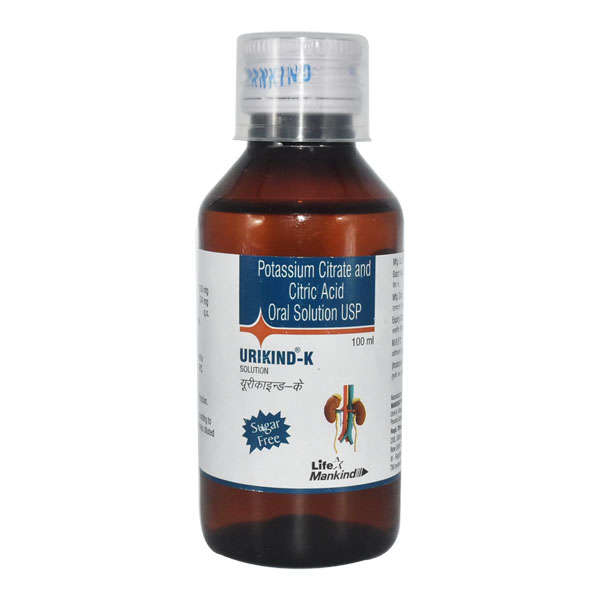Urikind-K Solution
Urikind-K Solution is a combination medication used to either prevent or treat certain types of kidney stones or gout. Its purpose is to raise the pH level of urine, creating a less acidic environment in the urinary tract. This adjustment in urinary pH can be highly effective in preventing the formation of specific kidney stones and urinary tract infections.
Essentially, this medication works by making the urine more alkaline, reducing the risk of crystal formation in the urinary system. To ensure proper urinary health, it is essential to use this medication as directed by a healthcare professional.
Before use, carefully read the label for instructions on a measuring cup to take the medication by mouth, and make sure to shake the syrup well before use.
You can take this drug with or without food, but it is recommended to take it at the same time every day for consistency.
It's important to exercise caution if you have diabetes or kidney issues when consuming this medication. Regular monitoring of potassium levels is advisable, and it's crucial to inform your healthcare professional about all existing medical conditions and medications.
Avoid sudden dietary changes, especially those involving high-potassium foods.
Common side effects of Citric Acid + Potassium Citrate may include stomach upset, diarrhea, and vomiting.
If you miss a dose, take it as soon as you remember. However, if it's close to the time for your next dose, skip the missed one and follow your regular dosing schedule.
Avoid taking a double dose. If you have any questions about managing missed doses, consult your healthcare provider.
Similar Medicines
Related Posts

1:15
Immunotherapy: A Treatment For Lung Cancer

1:15
What is cervical cancer screening

1:15
What is Cervical Cancer & Its Symptoms?

1:15
Can Eating Watermelon Improve Your Skin, Digestion And Heart Health?

1:15
4 Easy Home Remedies for Back Pain!

1:15
5 Amazing Benefits of Cucumber! Summer Superfood for Health & Weight Loss!

1:15
Do You Know Why Mango Is A Must-Have Fruit In Summer?

1:15
Top 5 Health Benefits of Muskmelon | Best Summer Fruit for Hydration & Weightloss!
Disclaimer : This information is not a substitute for medical advice. Consult your healthcare provider before making any changes to your treatment . Do not ignore or delay professional medical advice based on anything you have seen or read on Medwiki.
Urikind-K Solution
Prescription Required
Packaging :
bottle of 100 ml Oral Solution
Manufacturer :
Mankind Pharma LtdComposition :
Citric Acid (334mg/5ml) + Potassium Citrate (1100mg/5ml)













.svg)
